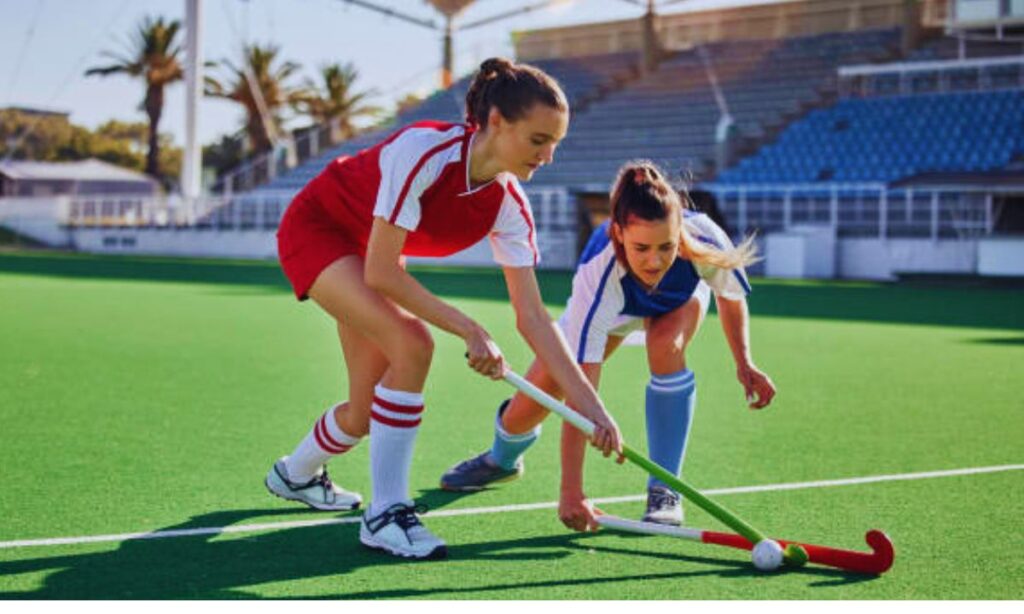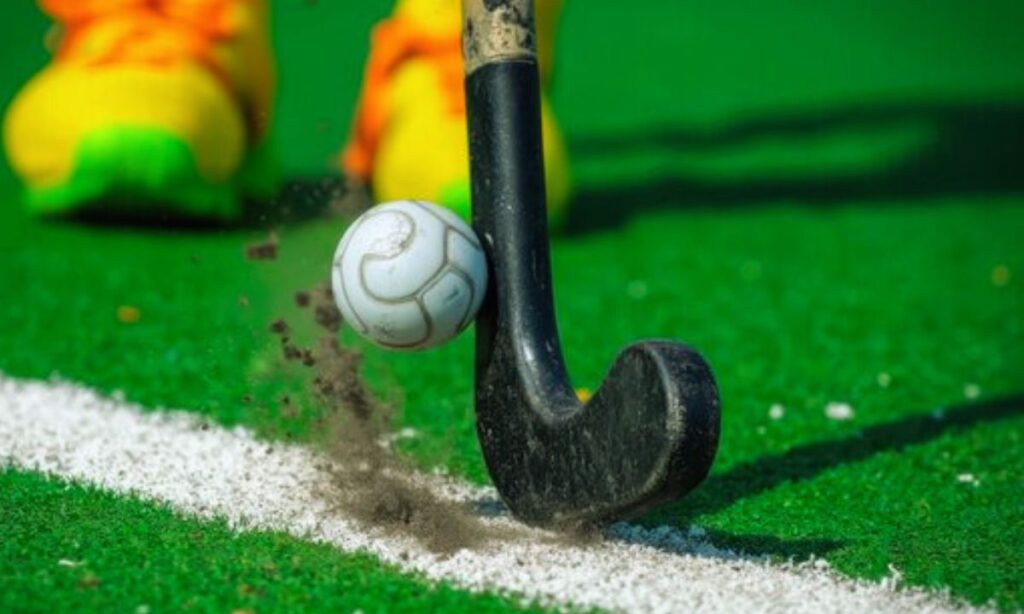When stepping onto the field, your skill is crucial—but so is your equipment. A well-prepared hockey kit isn’t just a checklist of things to carry; it’s your toolkit for confidence, protection, and performance. Whether you’re a beginner or a seasoned player, knowing the essential items in a hockey kit is the first step to staying ahead in the game. This article will walk you through every item you need, why it matters, and how to make the right choices.
Hockey Stick – Your Primary Weapon
Choosing the Right Stick
The hockey stick is the most essential item in a hockey kit. It’s your connection to the ball and a reflection of your playing style. Picking the right one depends on your position, strength, and comfort. Lightweight sticks offer speed and control, while heavier ones provide more powerful hits. The stick’s length should reach your hipbone for optimal handling.
Materials and Grip
Modern sticks are made of composite materials like carbon, fiberglass, and aramid. Carbon provides stiffness and power, while fiberglass adds durability. A good grip enhances control, especially in wet conditions. Tape or overgrips can also improve handling.
Shin Guards Your First Line of Defense
Importance of Protection
Shin guards protect your lower legs from sticks, balls, and accidental kicks. They are mandatory in most leagues. Properly fitted guards should cover from just below your knee to above your ankle.
Types and Comfort
There are hard-shell guards for maximum protection and softer padded ones for better mobility. Comfort and fit matter. Try different types to find what suits your game. Adjustable straps help keep them in place throughout the match.
Mouthguard – Don’t Risk Your Smile
Protecting Your Teeth and Jaw
A mouthguard is one of the most essential items in a hockey kit. It protects against dental injuries and concussions. Some leagues won’t let you play without one.
Custom vs. Boil-and-Bite
Custom-fit mouthguards are molded by a dentist and offer the best fit and protection. Boil-and-bite versions are more affordable and still provide solid safety when fitted correctly.
Hockey Shoes – Traction Meets Comfort
Field Grip and Stability
Hockey shoes are designed for turf surfaces. The right shoes improve grip, balance, and quick turns. Slipping on wet grass can cost you the game.
Fit and Cushioning
Choose shoes with good ankle support and shock absorption. A snug fit prevents blisters, while cushioning reduces foot fatigue during long matches.
Gloves – Grip and Safety
Enhanced Control
Gloves give you a better grip on the stick and help with dribbling and flicks. Many players wear a glove only on their left hand for stick control.
Finger Protection
Besides grip, gloves also shield your hands from injuries during tackles and deflections. Look for padding without compromising flexibility.

Jersey and Shorts – Comfort and Identity
Breathable Fabrics
Your playing uniform should be lightweight and breathable to keep you cool. Moisture-wicking materials like polyester help regulate body temperature.
Proper Fit
Too tight and you’ll feel restricted, too loose and it becomes a distraction. The right size boosts performance and confidence.
Socks – Not Just a Style Statement
Shin Guard Compatibility
Hockey socks are designed to hold your shin guards in place. They should be tight enough to secure but not cut off circulation.
Moisture Control
Good socks wick sweat and prevent blisters. Choose high-quality sports socks that offer padding in key areas.
Water Bottle – Stay Hydrated
Essential for Every Match
Hydration affects performance and focus. Always carry a large, leak-proof water bottle in your hockey kit.
Practical Design
Look for bottles with easy sipper tops or squeeze designs so you can drink without removing your mouthguard.
Towel – For You and Your Gear
Personal Use
A towel helps wipe off sweat, rain, or mud. Keep one ready during intense matches or training sessions.
Equipment Care
Use a separate towel to clean your stick or shoes after play. Keeping gear dry extends its life.
First Aid Kit – Be Ready for Anything
Minor Injuries
Include band-aids, antiseptic wipes, pain relief spray, and tape. These basics can treat blisters, cuts, and muscle strains.
Compact but Complete
A small, organized pouch can hold all your essentials. Never rely solely on the coach or team medic—be prepared.
Kit Bag – Your Mobile Locker
Size and Compartments
Your bag should fit all your gear without cramming. Multiple compartments help keep wet and dry items separate.
Durability and Comfort
Choose bags with padded straps and water-resistant material. A good hockey bag makes carrying gear much easier.
Extra Clothing – Always Be Prepared
Weather and Warm-Up
Carry a sweatshirt, windbreaker, or rain jacket depending on the forecast. Dry clothes are vital after a wet match.
Extra Socks and Undergarments
Fresh gear keeps you comfortable post-game and avoids skin infections. Always pack spares in your kit.
Hockey Ball – Practice on the Go
Match vs. Training Balls
Training balls are heavier and help improve strength. Match balls are lighter and used during games. Carry at least one of each.
Brand and Build
Choose a dimpled ball for outdoor play. Brands like Kookaburra and Slazenger are known for quality. A reliable ball is an underrated asset.
Tape and Scissors – Little Tools, Big Help
Quick Fixes
You’ll often need tape to adjust grips, mend gear, or secure loose shin guards. Scissors help make quick changes on the spot.
Always Keep Them Handy
These small items can save your matchday. Store them in an outer pocket of your kit bag.
Base Layers – The Unsung Comfort Heroes
Temperature Regulation and Performance
Base layers are often overlooked, but they’re key for maintaining your body temperature. Whether you’re playing in cold or hot conditions, moisture-wicking base layers help regulate sweat and keep you dry. Thermal ones provide warmth during winter matches without adding bulk. They fit snugly under your uniform and can make a big difference in both comfort and endurance.
Compression and Recovery
Many base layers come with compression features that support your muscles and reduce fatigue. These are especially helpful during intense training or back-to-back games. They also assist in quicker recovery by improving blood circulation. Look for materials that are breathable and stretch well with your body’s movements.
Sports Watch or Fitness Tracker – Track Your Game
Monitor Performance Metrics
Including a fitness tracker or sports watch in your hockey kit can elevate your game. These devices track your distance covered, heart rate, and even speed—helping you understand your physical output and adjust accordingly. Some advanced models even offer GPS tracking for outdoor play.
Training and Recovery Insights
Smart trackers help players analyze their workload, sleep cycles, and rest periods. That kind of data supports smarter training and prevents burnout. Choose a model that syncs easily with mobile apps and has a long battery life to last through tournaments or full-day training.
Rain Cover or Waterproof Gear Pouch
Protecting Your Kit in Bad Weather
Weather is unpredictable, and a sudden downpour can ruin your expensive gear. A waterproof gear pouch or a rain cover for your bag ensures your hockey essentials stay dry. This is especially useful during outdoor matches or travel to different venues.
Organize Small Items
Besides protection, pouches help organize small tools like tapes, mouthguards, or keys. Instead of fishing through a large bag during a break, keep things handy and protected. Durable zippers and waterproof fabric are essential for these add-ons.

Energy Snacks – Keep Your Fuel Up
Quick Energy Boosts During Play
Your performance isn’t just about practice and gear—it’s also about fueling right. Always keep an energy bar, banana, or electrolyte gel in your kit. These can be lifesavers during long tournaments or back-to-back matches, giving you a burst of energy when you need it most.
Easy to Pack and Carry
Choose snacks that don’t melt or get messy. Store them in a side pocket or a sealed pouch. A properly fueled body performs better, recovers faster, and stays mentally sharp—something every player should prioritize.
Deodorant and Body Wipes – Stay Fresh
Post-Game Clean-Up
You may not always have access to a full shower after a match. Body wipes and deodorant offer a quick refresh, especially if you’re heading somewhere right after a game. These items help maintain hygiene and make post-game socializing or commuting far more comfortable.
Travel-Friendly and Compact
Choose travel-size options to save space in your hockey bag. Unscented or lightly scented versions are often a better choice for shared locker rooms. Staying fresh is part of staying confident—on and off the field.
Sunglasses and Cap – Weather Readiness
Shield Your Vision
Outdoor players face sun glare that can impact visibility. A good pair of sports sunglasses with UV protection helps shield your eyes and improves ball tracking. A wide-brimmed cap or visor can also block sunlight during breaks.
Pack Smart for Day Matches
Always have a compact foldable cap and a case for your glasses in your kit. This ensures you’re not caught off guard by a bright day. Clear vision leads to quicker reflexes, sharper passes, and better gameplay.
Spare Shoelaces – A Small Fix with Big Impact
Prevent Mid-Game Delays
It’s rare, but when your shoelace breaks mid-match, it’s a frustrating situation. Keeping a spare set in your kit avoids this hassle. It’s a cheap, simple item that can save your game, especially during tournaments.
Choose Durable and Pre-Stretched Laces
Not all laces are created equal. Look for pre-stretched, synthetic options that don’t fray easily. Store them in a side pocket or wrap them around your shoe sole inside the bag.
Hand Sanitizer – Hygiene Is Key
Germ-Free Hands Before and After
Field hockey is a physical sport, and hygiene is often compromised during play. Carrying a small bottle of hand sanitizer ensures you can clean your hands before eating or after a match, especially if soap and water aren’t available nearby.
Avoid Contamination of Gear
Using sanitizer before touching shared gear or your mouthguard helps prevent infections. It’s an important item for both personal health and team hygiene, particularly during flu seasons or after games on muddy fields.
Notebook or Journal – Record Your Progress
Tactical Notes and Performance Logs
A small notebook in your hockey kit lets you jot down tactical advice, feedback from coaches, or personal performance notes. Reviewing them helps you remember what to improve and what worked well.
Motivation and Goal Tracking
Recording your goals, training schedule, and mental state after games can help keep your motivation high. It’s a personal touch that brings structure and reflection to your athletic journey.
Extra Hockey Stick – Always Be Ready
Backup in Case of Breakage
No matter how durable your primary stick is, breakage can occur—especially during intense tackles or rough play. Having a backup stick in your hockey kit ensures you’re never left stranded.
Final Thoughts – Every Detail Counts
Knowing the essential items in a hockey kit can mean the difference between a good performance and a great one. Being prepared physically and mentally starts with packing smart. From protective gear to hydration, every item plays a role. Think of your kit as an extension of your training. Get it right, and you’ll step onto the field with confidence every time.

